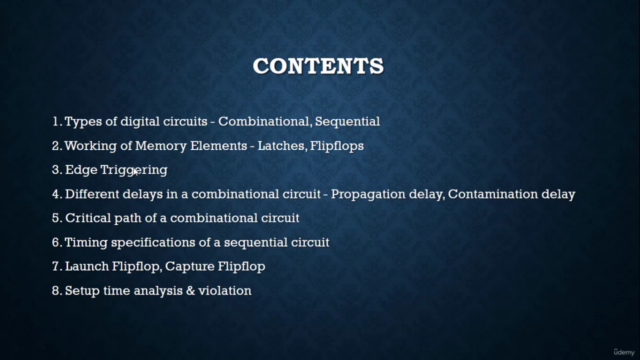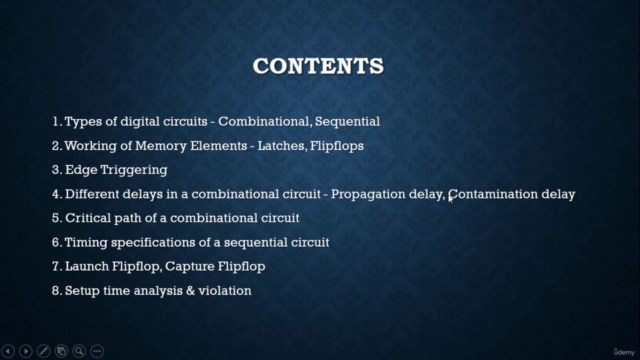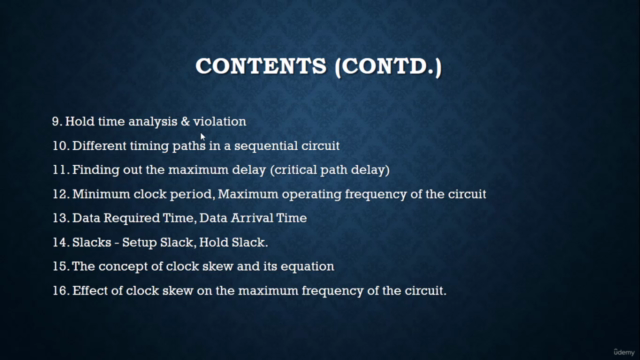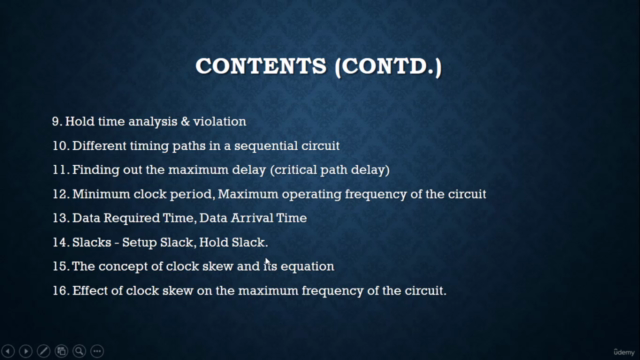Static Timing Analysis: VLSI

Why take this course?
🎓 Master Static Timing Analysis (STA) for VLSI Circuits!
🚀 Course Title: Static Timing Analysis: VLSI
👀 Headline: Dive into the World of High-Speed Digital Design with Expertise in STA! 💡
Are you ready to unlock the secrets of high-speed digital circuit design? If you're aiming to become a proficient chip design engineer, then grasping the principles of Static Timing Analysis (STA) is non-negotiable! This comprehensive course, "Static Timing Analysis on VLSI Circuits," is meticulously crafted to guide you through the intricate world of digital circuitry and timing requirements.
📚 Course Description: This course is a deep dive into the critical aspects of STA, which plays a pivotal role in ensuring that digital circuits function as intended under all conditions. We will delve into the fundamental concepts, practical applications, and the mathematical foundations required to design a digital circuit that adheres to strict timing constraints. Whether you're a beginner or looking to sharpen your skills, this course will equip you with the tools and knowledge necessary for a successful career in VLSI design.
What You Will Learn:
- Types of Digital Circuits: Master both Combinational and Sequential digital circuits.
- Memory Elements: Understand the functioning of Latches, Flipflops, and their roles in STA.
- Edge Triggering: Explore how edge triggering affects timing analysis.
- Delay Types: Learn about Propagation delay, Contamination delay, and their impacts on circuit timing.
- Critical Path Analysis: Identify and analyze the critical path of a combinational circuit.
- Timing Specifications: Gain insights into the timing specs of sequential circuits.
- Flipflop Types: Dive deep into Launch Flipflops, Capture Flipflops, and their importance in STA.
- Setup & Hold Time Analysis: Learn how to perform setup time analysis and identify violations.
- Hold Time Analysis: Understand the implications of hold time violations.
- Timing Paths in Sequential Circuits: Analyze different timing paths and their effects on circuit performance.
- Maximum Delay & Clock Period: Determine the maximum delay (critical path delay) and calculate the minimum clock period.
- Data Required Time & Data Arrival Time: Learn about the critical timings related to data.
- Timing Slacks: Understand Setup Slack and Hold Slack in the context of STA.
- Clock Skew: Grasp the concept of clock skew and its impact on circuit performance.
📈 Real-World Applications & Practical Problem Solving: In the final section, we'll apply the concepts learned to solve practical problems and tackle common interview questions related to STA. You'll gain hands-on experience by calculating the maximum clock frequency for a given circuit, considering all timing parameters such as setup time, hold time, propagation delay, and contamination delay.
By understanding how to analyze and optimize the timing of sequential circuits, you will be able to predict and ensure that your designs can operate at their highest possible speeds without compromising data integrity or functionality.
Join me on this journey to master Static Timing Analysis for VLSI Circuits! Enroll now to take a significant step towards becoming an expert in digital circuit design and timing analysis. 🎥👩💻
Let's embark on this exciting learning adventure together! Sign up today and transform your career with the power of STA! 🚀💻
Course Gallery




Loading charts...